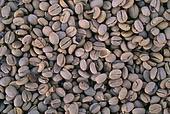Essential Oils
Soft Extracts
- Coleus Soft Extract
- Coleus Extract Powder
- Ginger Soft Extract
- Neem Soft Extract
- Roasted Coffee Extract (Arabica)
- Vanilla Soft Extract
Spices Oleoresins
Coffee Products Available :
Co2 Decaf Method

This method uses two natural elements, pure water and carbon dioxide ( together they make "Sparkling Water") to extract caffeine from the coffee grains. This method was discovered by Kurt Zosel, a well named scientific of the Max Plank Institute.
Steps for the Co2 or Carbonated Water Method:
- Coffee is mixed with pure water.
- When the coffee absorbs the water the beans expand, their pores open and release caffeine molecules.
- Now carbon dioxide which is 100% Natural Element is added to the pure water at 100 atmospheres pressure.
- Water and Carbon Dioxide (Co2) are mixed to create sparkling water.
- The carbon dioxide attracts caffeine molecules that are released.
- The captured caffeine is removed.
- Carbon dioxide does not touch the proteins and carbohydrates.
- The carbohydrates and the proteins are compounds that give coffee its distinctive smell and flavour.
- When the carbon dioxide has removed the caffeine the seeds are dried naturally.
Benefits of this method:
- Extracts Caffeine, effectively. Is a direct contact method but does not use chemicals.
- Proteins and carbohydrates do not chemically affect the coffee beans.
- The byproducts are natural and a 100% recyclable.
DECAFFEINATING COFFEE
CAFFEINE is a small, bitter-tasting alkaloid. From superior Arabica coffee beans (the main source of most specialty coffees) are typically 1 percent caffeine by weight, whereas cheaper and more bitter Robusta beans have twice that amount.
Spurred by the belief that excessive coffee had poisoned his father, the German chemist Ludwig Roselius, in 1900, found a number of compounds that dissolved the natural caffeine in coffee beans without spoiling the drink's taste. Chloroform and benzene did solve the problem but were found to be toxic, so for many years methylene chloride became the alternative.
In the 1980s It was found to be carcinogenic, all the big U.S. coffee labels abandoned the chemical. The Food and Drug Administration continues to permit the use of methylene chloride if the residues in the coffee are below 10 parts per million. Processing for specialty decafs still often uses it because it doesn’t interfere with other flavours.
Many other solvents can assist to debuzz coffee. An "all-natural" label may mean that ethyl acetate is the solvent in use, because it occurs naturally in fruit. And works as a means of decaffeination. The so-called Swiss water process soaks green coffee beans in a solution that contains the chemical components of beans dissolved from a previous batch, except the caffeine. Because the water is already saturated with sugars and peptides, only caffeine passes from the beans into the water.
1.SOAKING green coffee beans in water doubles their size, allowing the caffeine to dissolve into water inside the bean.
2. CAFFEINE REMOVAL occurs in an extraction vessel, which may be 70 feet high and 10 feet in diameter, suffused with carbon dioxide at roughly 200 degrees Fahrenheit and 250 atmospheres. Caffeine diffuses into this supercritical carbon dioxide, along with some water. Beans enter at the top of the chamber and move toward the bottom over five hours. To extract the caffeine continuously, the beans lower in the column are exposed to fresher carbon dioxide, which ensures that the caffeine concentration inside beans is always higher than in the surrounding solvent. Caffeine therefore always diffuses out of the beans.
3. DECAFFEINATED BEANS at the bottom of the vessel are removed, dried and roasted.
4. RECOVERY of dissolved caffeine occurs in an absorption chamber. A shower of water droplets leaches the caffeine out of the supercritical carbon dioxide. The caffeine in this aqueous extract is then often sold to soft-drink manufacturers and drug companies. The purified carbon dioxide is re-circulated for further use.


